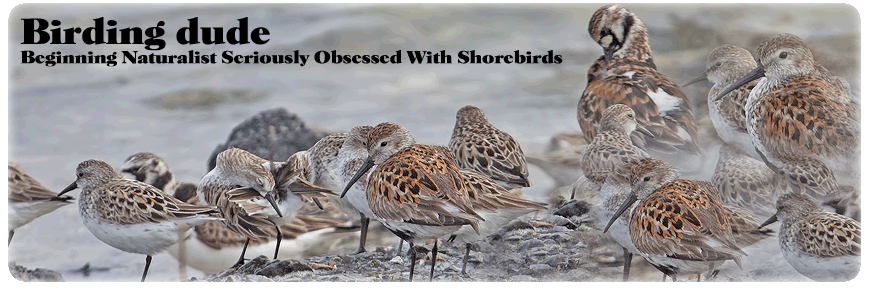Some of my fellow New York birders had reservations, but I was in a gambling mood and so I kept my ear to the ground on the bird's location and whereabouts. The Saturday came and no one had seen the bird until I spoke to fellow New York birder Tom Burke, late that afternoon who told me that it was re-found on the NY side. Later that evening I put in a call to one of my more adventurous birding mates, Eric Miller and suggested that we make a run upstate. Our other friend, Jeff Ritter had indicated that he was not up to making that long of a run, but would settle for a chase after Pine Grosbeaks.
Both birds were lifers, but with the uncertainty surrounding the Pochard, I was okay in settling for Pine Grosbeaks, so I conceded. The next morning, while getting ready to meet the guys, the phone rings, it was Jeff. He had a change of heart, the Pochard chase was on. We met and quickly hit the road blasting up north. Other than having to yell at the guys for having the temerity to suggest that we better get to the site before a Bald Eagle grabbed the Pochard, our ride was uneventful. We passed the time discussing the bird and trying to identify as many species as could as we passed them doing the speed limit :).
We arrived at the location where the bird was last reported and saw only one birder getting into her car. We found out from her that the bird had relocated and was being seen by many birders on the New York side near a pier in Port Henry. We quickly found the area and looked for the telltale signs of Empire Passes and other stickers indicating that we were in the right area and were relieved when I looked along the shore and saw the line of birders. I hightailed it through the snow and met on his way out Tom Johnson, the genius from Cornell Lab of Ornithology. Our exchange were as follows, "Hi Tom, is there any place you are not seen? A smile from Tom. I continued, did you see the bird?" Tom responds, "yes", I responded, "was the look good?" Tom with a pained expression, "Yes..., almost too good of a look." My heart sank, I was dreading what was coming next. "Too good of a look"? "Yes, the bird has a plastic band." I bid Tom farewell and I was not sure if Chris Wood and Jessie Barry were the other two people with him because my mind was busy trying to reconcile what a banded bird meant.
When I joined the group of birders looking at the Common Pochard, no one mentioned that the bird had a band, so I did not say anything. I found the bird and began to study it hoping to get a glimpse of its legs. After about 20 minutes of watching the bird, it turned on its side to do some preening and I caught a glimpse of a band on its right leg, but it looked metal to me instead of plastic. I walked over to a fellow Long Island birder, Bobby Rosetti and mentioned that the bird had a band. Bobby at first thought I was playing a cruel joke, but after looking at the bird he himself saw the band. I ended up capturing a not so great digiscope shot showing the band. By now, I had shared my observation with Jeff and Eric. The three of us remained upbeat, so what if there was a band? A Common Pochard was still a cool duck to see and we enjoyed our looks, deciding that we would leave it to the records committees to decide ( as of Jan 21st, the consensus, is leaning towards an escaped bird). After a while we departed, heading off to chase Pine Grosbeaks...more on that in another post.
Tags:




No comments:
Post a Comment